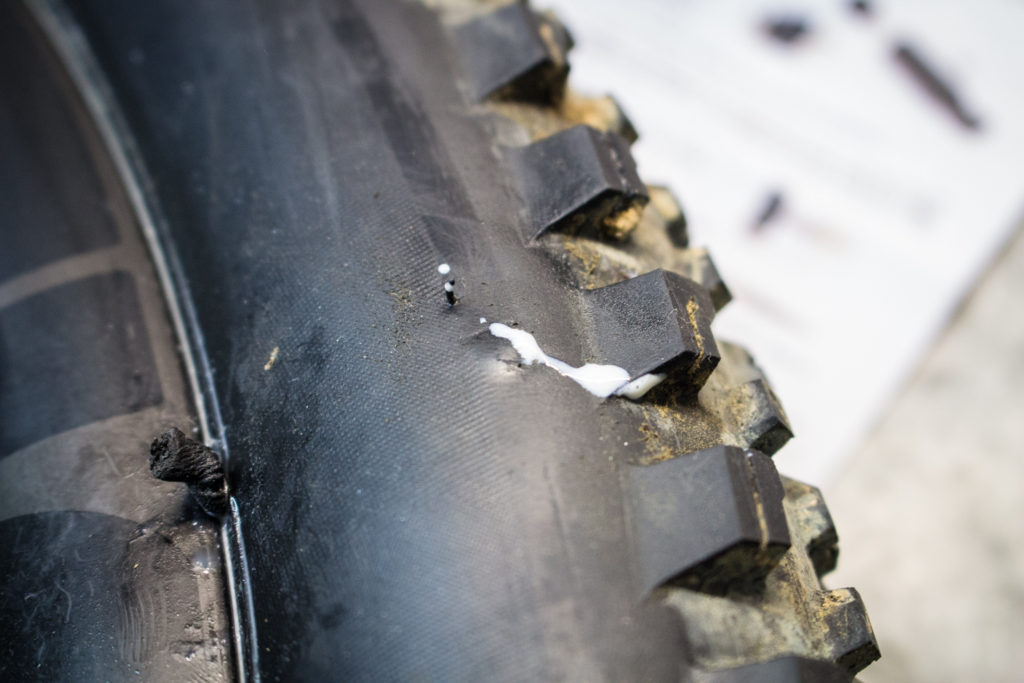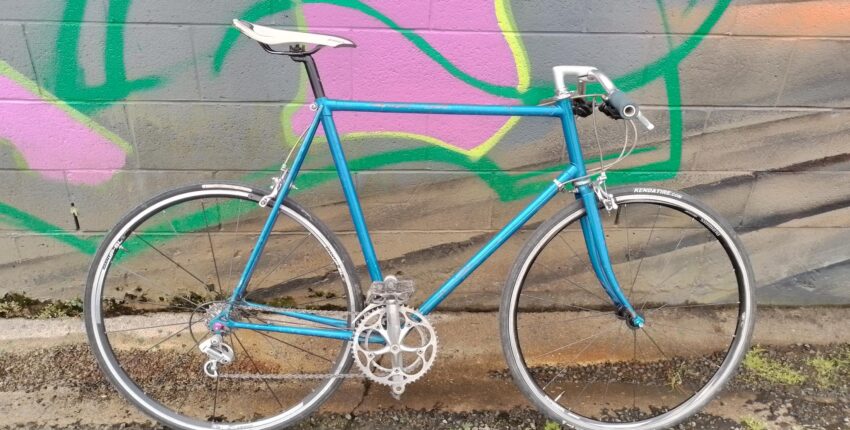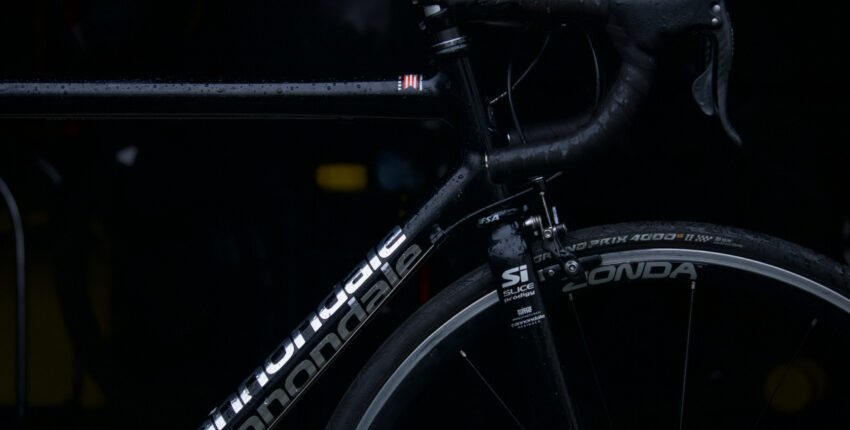The Great Plus +/- Minus Experiment
 With a new innovation seemingly rolling out every week in mountain biking, it’s easy for some of them to get left by the wayside, while others slip seamlessly into the mainstream and take over as a new standard while you weren’t looking. When 27.5 or––650b as it was first known––hit the scene, it seemed only like we’d have a third choice of wheel sizes alongside the established two. But mid-sized soon all but wiped 26″ from the face of the earth and took over as the predominant wheel diameter. Not content and with most taking the bait and buying new bikes with the new standard, we were introduced to 27.5 Plus (along with the accompanying Boost axle spacing, because, you know, you need it) and suddenly 2.5 was barely enough rubber anymore.
With a new innovation seemingly rolling out every week in mountain biking, it’s easy for some of them to get left by the wayside, while others slip seamlessly into the mainstream and take over as a new standard while you weren’t looking. When 27.5 or––650b as it was first known––hit the scene, it seemed only like we’d have a third choice of wheel sizes alongside the established two. But mid-sized soon all but wiped 26″ from the face of the earth and took over as the predominant wheel diameter. Not content and with most taking the bait and buying new bikes with the new standard, we were introduced to 27.5 Plus (along with the accompanying Boost axle spacing, because, you know, you need it) and suddenly 2.5 was barely enough rubber anymore.

Having taken my own bait willingly and moved up to 40mm wide rims and 2.5 tyres, I was convinced that there were some performance gains made by that process. Who knew that .2 would make so much difference! With that logic freshly ruminating, it seemed that adding another .3 would add even more traction to the equation. With a heap of frame clearance for the 2.5s at the back of my Turner and what seemed like probably enough on the MRP fork, I wondered if it was actually necessary to buy a whole new bike to get the perceived benefits of Plus or if any ‘old’ bike could be upsized. Well that I can’t answer for any bike except this one, but a cursory look at your own frame should be enough to know if you should fork out the big bucks for new tyres or not. Maybe borrow a friend’s wheels first… your friends do have all the latest shit, right?
The good folk at Marleen set me up with a couple of sets of Maxxis rubber, a Minion DHR/DHF combo and the less aggressive High Roller II/Rekon pairing. With the trails wet for a while longer, I mounted the Minions first to see what they’d do to my bike and my riding. I’d come directly off Minions in the 2.5/2.4 Wide Trail models and were loving them, so I expected more of the same and possibly more of more of the same. What I did notice initially was that they aren’t as slow as most people think Plus tyres are, and still got me up the hill at the same languid pace I’d normally go. So no downside there. Hitting the downside however let the tyres come into their own, and there were certainly gobs of grip on the wet trails. Slippery roots and rocks still presented the same traction issues you always deal with but the extra volume gave a feeling of floating over them with a little bit of ‘give’ in the side casings, but without any squirm. Pressure is a bit more critical with the big volume tyres, and a fair bit of trial and error is needed to get them just right, as with any tyre. I found generally that about 2-4 PSI lower than I ran my ‘normal’ tyres (about 14-17PSI for Plus) worked best in most conditions.
As far as the benefits of extra tread on the ground go, it was hard to actually determine a huge difference from the 2.5s, but that’s not to say it wasn’t happening. Traction with big rubber is certainly noticeable if you’re coming from 2.2s or 2.3s, and there is a ton of grip from the Plus tyres. Whether or not it’s a must-have, well that’s up to you. Intermediate riders probably benefit the most from the fatties, and a lot of riders I know who have made the change sing the praises loudly. And while a lot of pro racers are running up to 2.6 treads, the jump to Plus hasn’t had the same effect as may have been thought. But there’s a kind of resurgence of Plus in the new bike market now with many manufacturers offering bikes that can easily be switched between 27.5 Plus and 29″ hoops. You pick which one you want to start with.
The clearance at the back of the bike never posed any problems with mud build-up, but having a non-Plus fork meant there was scant room for crud to pass through, especially if running a fork bridge-mounted fender. Having said that, it didn’t cause any major clogging problems, even with the taller knobs of the Minion DHF compared to the High Roller. Which poses the question, how much tread do you need on a Plus tyre? The Minions at first sight look like a rolling resistance nightmare and a traction wet dream. Is not one of the points of Plus to have smaller knobs over a bigger contact patch? The Minion scoffed at such suggestions and filled that patch with big square aggressive chunks that begged to be slammed into corners to see just how far they could be pushed before letting go. They came close a lot, but never once relented.
 Setting the Plus rubber up tubeless presented no more hassle than any other tyre and seated easily with a good compressor blast or air. I learnt the hard way that you need to carry a Plus-sized tube, and a tyre plug tool. A bit of a pinch in a rock garden put a small hole near the bead and one in the casing, which were easily fixed later and saved a costly tyre replacement. But standard tubes don’t play well with Plus tyres, believe me.
Setting the Plus rubber up tubeless presented no more hassle than any other tyre and seated easily with a good compressor blast or air. I learnt the hard way that you need to carry a Plus-sized tube, and a tyre plug tool. A bit of a pinch in a rock garden put a small hole near the bead and one in the casing, which were easily fixed later and saved a costly tyre replacement. But standard tubes don’t play well with Plus tyres, believe me.

The experiment at least proved that sometimes you don’t need a new bike to get some of the latest developments, and tyres are always the best place to start upgrading any bike. Whether you can take your existing bike to Plus will simply be a matter of trying it. I don’t know if there were any substantial performance gains made (or losses, for that matter) but it gave my bike just enough of a character tweak that it seemed like it was time well spent to try it.








